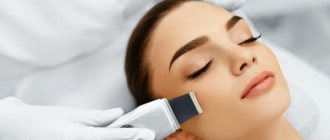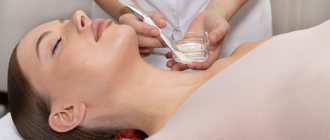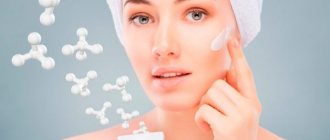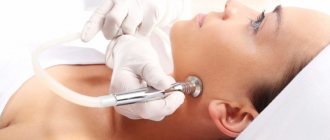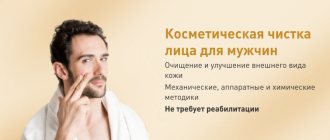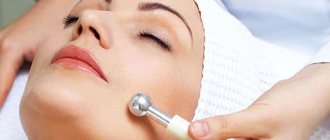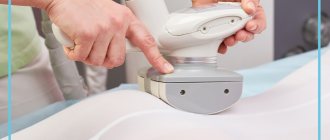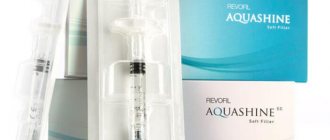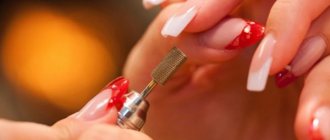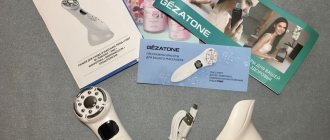Rating: No rating
Do you want your facial skin to look clean, young and well-groomed? Facial cleansing will help with this. There are such types of facial cleansing: mechanical and hardware, which includes vacuum facial cleansing, enzymatic, laser, galvanic and ultrasonic. In this article we will take a detailed look at ultrasonic facial cleansing with its pros and cons, how and where it is carried out, and find out feedback from the participants in the experiment.
Indications for manual cosmetology
Manual facial cleansing (manual removal of sebaceous plugs by a cosmetologist can be an independent procedure or part of a 12-stage peeling) is a deep cleansing of the skin from dead cells, dirt, and fat accumulations.
In the process of manual manipulation using instruments (“Uno spoons”, “Vidal needles”), the specialist softens the keratinized upper layer (to open the pores), removes the fatty film and deep-seated sebaceous plugs that impede air exchange and the flow of nutrients. A direct indication for mechanical cleansing is the appearance of acne.
Manual facial cleansing by a cosmetologist helps fight acne.
Manual cleansing helps to get rid of acne for a long time, improve the color and texture of the face. The salon procedure is very traumatic and associated with strong unpleasant sensations. It is carried out strictly by a cosmetologist using disinfectants.
What do you need for home cleaning?
You need to prepare in advance:
- Rubberized hair cap, hair clip or elastic band.
- Cotton pads or paper towels
- Sterile bandage
- Two terry towels: a large one and a smaller one.
- Mirror. Preferably magnifying.
- Gel for washing
- Makeup remover milk.
- Bowl of hot water.
- Ice.
- Moisturizing cream.
- Extracts of medicinal plants depending on skin type.
- Correct, good lighting
If your skin is problematic, with pustules and dilated blood vessels, then it is better to do without self-cleansing your face.
What is the difference between mechanical facial cleansing and ultrasonic cleansing?
Cosmetology clinics offer various options for skin cleansing. In addition to manual facial cleansing, which requires the use of a minimum number of devices and products, clients are offered an ultrasonic procedure performed using a device.
During the process of ultrasonic cleaning, the upper layer of the epidermis is cleared of dead tissue by ultrasonic waves that destroy dead cells.
Advantages of the hardware technique:
- absence of skin injury and the possibility of infection if the technological process is disrupted;
- eliminating the appearance of redness and swelling of tissues;
- enrichment of cells with oxygen, improvement of collagen formation and blood circulation after a course of procedures.
Unlike manual cleaning, cleaning performed with an ultrasonic device is not able to act in the deep layers of the dermal layer of the skin. For complete cleansing, a course consisting of 3-5 cosmetic sessions is required, prescribed at intervals of 4-5 days.
A distinctive feature of ultrasound exposure is micromassage of cells, leading to increased collagen production and a reduction in age-related changes. After a course of ultrasonic cleansing, facial wrinkles are smoothed out on the skin, complexion and the general condition of the tissues improve.
Don't miss the most popular article in the section: Hyaluronic acid in tablets. Benefits, how to take, reviews from doctors and effectiveness.
Vacuum cleaning
The procedure is based on the dosed action of negative atmospheric pressure (air is pumped out from the drainage tube of the device).
Several types of nozzles are used:
- Beak-shaped - for treating the T-zone.
- Flat - for working with wrinkles.
- A round drainage tube provides lymphatic drainage.
The technique is atraumatic - this is its main advantage. It is suitable for caring for oily, combination and normal skin.
Vacuum cleaning is often carried out after casting.
Indications:
- aging skin with reduced turgor;
- acne, comedones.
Efficiency
The effect of vacuum helps improve blood flow and lymph outflow in the treated area, as a result, natural regeneration processes are activated and swelling is reduced.
The device sucks out comedones and also has a slight exfoliation effect. After the first procedure, some of the blackheads disappear, the skin becomes cleaner and fresher.
Carrying out the procedure
The patient is placed on the couch and his hair is tucked under a cap.
Treatment is carried out in strict sequence along massage lines:
- Chin: movement from bottom to top towards the nose or up and to the side towards the cheeks.
- Cheeks: movements seem to tighten the skin - from the nose to the ears.
- The forehead is processed in different directions.
- A round nozzle of small diameter is used for the nose, the back is worked with longitudinal movements, and the wings are worked with circular movements.
Stages:
- Thorough make-up removal, cleansing and degreasing of the skin.
- Carrying out disincrustation.
- Carrying out cleansing therapy using a vacuum apparatus. Depending on the area being worked on, the appropriate nozzle is selected (beak-shaped, flat or round).
- Apply a soothing, regenerating and pore-tightening mask and cream.
The session takes 40-50 minutes. It is permissible to repeat 3-4 times per year with an interval of 3-4 months.
Precautionary measures
The vacuum cleaning procedure is considered gentle, but does not completely guarantee the preservation of tissue integrity.
It is important to remember to disinfect and sterilize attachments. You should also not lose sight of contraindications, neglect of which can harm not only beauty, but also your health.
Side effects:
- The introduction of pyogenic flora into the tissue with the subsequent development of pustular diseases of the dermis.
- Persistent hyperemia (more than 48 hours).
- Formation of edema, pinpoint hemorrhages, hematomas (in case of poor technique, weak capillaries).
Contraindications:
- Dry skin.
- Expanded subcutaneous capillary network.
- Telangiectasia.
- Rosacea.
- Any infections in the active phase.
- Chronic dermatoses during exacerbation.
Buyanov Sergey Yurievich (Expert Doctor):
Vacuum use is contraindicated during pregnancy. The procedure causes a state of local stress, which can spread to the entire body, including the uterus and fetus.
Types of manual cleaning
Facial cleansing is a necessary procedure performed to eliminate excess sebum and impurities that close pores and prevent cells from nourishing and moisturizing.
Cosmetology salons offer:
- Mechanical (manual) facial cleansing is a very traumatic procedure performed with hands and Uno spoons. During the session, the steamed skin is cleansed, squeezing out blackheads and acne. The process of removing impurities is accompanied by pain, but allows you to remove inflammation, eliminating the cause of acne.
- Atraumatic cleansing , carried out with special preparations that dissolve sebum. The procedure is completely painless, recommended at any age, and allows you to cleanse the epidermal cells of accumulated impurities.
- Ultrasonic cleaning , eliminating sebaceous plugs through the action of ultrasonic waves. In addition to bringing to the surface the accumulated products of the sebaceous glands, during the procedure micromassage of tissues is performed, causing effective production of collagen. The session has a strong lifting effect.
- Vacuum cleaning, carried out with a special tube that draws sebum from the pores. The operation is non-traumatic and painless. Accompanied by improved blood circulation and increased skin tone.
- Galvanic cleansing , characterized by the dissolution of fat accumulations through the action of low-frequency current. Sebaceous particles, released from the pores, are converted into soap, and then removed by a cosmetologist from the surface of the tissue.
- Peels with AHA and fruit acids. Indicated for all ages. They help to gently remove dirt by dissolving the stratum corneum of the skin with preparations containing trichloroacetic acid and phenol. Cosmetology services require mandatory preliminary preparation (daily application of glycolic acid to the skin for a week).
The tissues of the face, chest and décolleté are cleansed. For those with oily skin, the procedure must be repeated at least once every 1.5-2 months.
Steaming
To successfully cleanse your face at home, you need a steam bath to open the pores. To prepare it you need one or two liters of herbal infusion or boiling water. Bend over the container and cover your head with a towel so that the resulting steam does not escape. For oily skin, a ten-minute steam bath is enough; for dry or normal skin, 5 to 7 minutes.
There is another way to steam the skin: place several layers of gauze soaked in hot water on your face, and wrap your head in a towel to maintain the temperature. Do not take off for eight or ten minutes.
We remind you that people with respiratory diseases are not recommended to breathe steam.
Indications
Manual facial cleansing (for a cosmetologist, the procedure is accompanied by preliminary cleansing of the skin) is indicated when it appears on parts of the body.
This:
- acne, deep-seated comedones;
- inflammatory skin processes accompanied by the formation of acne;
- wen, superficial pyoderma;
- enlarged, heavily clogged pores with sebum and dirt;
- unhealthy (reddish) shade of tissues;
- reduced elasticity of the dermal layer.
Don’t miss the most popular article in the section: Plasmolifting of the face - what it is, how it is carried out, results, photos before and after the procedure.
Are there any side effects?
If you ignore contraindications and post-procedure recommendations, and also contact specialists without medical education, skin cleansing in a salon can cause many side effects.
Common negative reactions include the following:
- Redness. Appears due to injury by mechanical or chemical action. After the session, at least 1-2 days should pass for the redness to subside. It is not dangerous, but interferes with the daily life of clients.
- Allergic reactions. They occur when you are allergic to latex gloves or cosmetics used during the session. You can prevent their occurrence if you first check the skin's reaction to drugs on the bend of the elbow.
- Peeling. For eczema, dermatitis, and very dry skin, some types of cleansing are contraindicated. If you ignore these prohibitions, the session can cause severe peeling.
- Rashes. The reason for their appearance is poor-quality antiseptic treatment both during the session and during subsequent care. Cleaned pores are very susceptible to external influences, so they quickly become clogged with dirt and bacteria.
- Injuries. Swelling, hematomas, potholes or scars after a session occur due to severe damage to the skin. It may be caused by insufficient professionalism of the cosmetologist who performed the procedure. Unfortunately, some types of consequences do not disappear over time and can only be removed with the help of auxiliary cosmetic procedures.
To avoid having a negative opinion about facial cleansing, contact popular salons with positive reviews and make sure that the cosmetologist has a specialized secondary or higher medical education.
Contraindications
Manual cleansing of the face (for a cosmetologist, the procedure is preceded by makeup removal and manipulations that lead to the opening of pores) is contraindicated for people suffering.
This:
- hypertension;
- viral hepatitis;
- herpes;
- fragility of blood vessels;
- allergic reactions accompanied by the appearance of eczema and psoriasis;
- furunculosis;
- diseases of the circulatory system;
- skin sensitivity;
- cardiovascular pathologies;
- bronchial asthma.
Women should not cleanse during:
- pregnancy;
- PMS;
- menstrual bleeding.
A high pain threshold is not an absolute contraindication. However, patients with acute pain should refrain from mechanical cleansing.
Consequences and contraindications
Immediately after the session, the skin will become bright red due to the rush of blood to it; it may swell or even swell slightly in the treatment areas. In addition, the procedure for mechanical facial cleansing has certain contraindications :
- Vessels close to the skin;
- Increased blood sugar, resulting in poor clotting;
- Cleaning harms people with herpes and fungal diseases;
- Skin sensitivity can cause bruising.
Photo - Before and after mechanical cleansing
The Women's Forum says that repeated inflammation and the appearance of pimples are also possible. You may need skin rehabilitation services: nourishing and moisturizing masks, soft regular scrubs and other ways to prevent pore contamination.
Each city regularly holds promotions and discounts for regular customers, but in general, mechanical facial cleansing has not only good reviews and before and after photos, but also prices. You will find a more detailed price list directly in the showrooms of your city.
Advantages and disadvantages of mechanical manual facial cleansing
Manual cleansing is a very effective procedure that allows you to cleanse and improve your facial skin. The process of mechanical cleansing (like any cosmetic manipulation) has its pros and cons.
Advantages:
- elimination of impurities accumulated deep in the epidermis;
- improvement of the skin, smoothing of the relief, improvement of blood circulation that appears after completion of the session and post-procedure recovery;
- normalization of the activity of the sebaceous glands, accompanied by a decrease in sebum secretion;
- low cost of the procedure.
Flaws:
- the appearance of severe pain during cleaning caused by pressure on the nerve endings;
- the procedure is highly traumatic, accompanied by redness of the skin and possible swelling;
- the danger of tissue infection arising from violation of cleaning technology and sanitary rules;
- the need for a long (5-6 days) rehabilitation process with mandatory tissue treatment with Chlorhexidine or Miramistin.
Ultrasonic cleaning
The operation of the device is based on the oscillation of ultrasonic waves emanating from the handpiece. The generated waves cause alternating acoustic pressure on the liquid medium applied to the skin and form “microjets”, which in turn have a peeling effect.
In addition, ultrasound vibrations perform micromassage, promote hydration of the dermis, activate cellular metabolism, tissue regeneration, as well as the synthesis of collagen and elastin.
The effectiveness of the procedure: superficial cleansing of pores, evening out tone and imparting radiance due to a pronounced exfoliating effect, stimulation of blood circulation and improvement of complexion, normalization of the sebaceous glands and reduction of sebum secretion in the aftermath.
Procedure protocol
Stages:
- Thorough makeup removal and cleansing with specialized products, degreasing the skin.
- Applying a warming mask under the film for 10-15 minutes helps to expand the pores.
- Zonal film removal followed by wet-on-wet cleaning (special tonics or lotions are used).
- Toning, restoring pH, after ultrasonic exposure.
- Applying a mask to close the pores.
- Apply moisturizer, in summer - with SPF.
Precautionary measures
Acne, severe inflammation, dry, irritated and sensitive skin are the main contraindications to manipulation.
Preparing for facial cleansing
Manual removal of fat deposits consists of a preparatory stage and the cleansing procedure itself.
During preparation, the cosmetologist:
- Disinfects hands, sterilizes equipment necessary for cleaning, in order to prevent infection of the client with pathogenic bacteria, puts on disposable gloves.
- Performs facial makeup removal with tonic or cleansing lotion to remove decorative cosmetics and surface impurities.
- Exposes the skin to steam or applies a warming mask designed to open the pores. If the patient has rosacea or spider veins, cold dehydrogenation is performed.
- Performs preparatory peeling with fruit acids to remove the top dead layer.
- Performs brossage (treatment of softened skin with rotating brushes with sterile attachments).
Summary
Facial skin care with professional cleansing is a great way to look fresh, well-groomed and young. A cleansing session allows you to cope with various skin defects: acne or comedones, unevenness, age-related changes, poor complexion.
If the type of procedure was chosen correctly, and post-procedure recommendations and contraindications were taken into account, it will demonstrate only a positive effect.
Stages of the procedure
Manual cleaning should not last more than 1 hour. No more than 20 minutes should be spent on processing each area. Otherwise, the pores will narrow and close, leading to increased pain and possible infection.
At the beginning of cleaning (after softening the stratum corneum), the cosmetologist disinfects the skin with Chlorhexidine, and then removes the greasy film from the inflamed area with a strainer. A “Uno spoon” is placed on the cleaned gap. By pressing on the device, the specialist forces sebaceous plugs to come out to the surface of the skin.
Hand movements are directed strictly against the flow of the excretory ducts:
- in the T-zone – from bottom to top;
- on the wings of the nose - from the beginning to the back;
- on the cheeks – from the outer part to the middle.
If it is impossible to remove fat with instruments, the specialist wraps his hands in sterile napkins and removes dirt by simply pressing on the skin. Devices and tissues are constantly treated with Chlorhexidine (this measure helps prevent infection). Deep-seated comedones require expansion of the sebaceous duct using a Vidal needle.
The device is placed in the center of the contamination, the plug is squeezed out by pressing. Whiteheads are first punctured and then removed using instruments. At the end of cleaning, the skin is wiped with disinfectants and lubricated with a soothing gel selected according to the skin type. In some salons, the final stage is a mask aimed at narrowing pores.
In the presence of severe contamination, mechanical cleaning is supplemented by vacuum or galvanization, designed to remove deep-seated fatty deposits.
If a one-time complete cleansing is not possible due to severely inflamed skin or the presence of old acne, a repeat session is scheduled, carried out 14 days apart.
Manual cleaning
The procedure is one of the most “ancient” and reliable, it is of the mechanical type. It helps eliminate blackheads, cleanses pores of impurities, and also removes blackheads and milia.
After the recovery period, the face looks noticeably healthier and well-groomed.
Buyanov Sergey Yurievich (Expert Doctor):
The advantage of the classical procedure is complete control over the actions and condition of the patient, which is impossible to achieve with “machine cleaning”.
Indications:
- Oily, problem or combination skin.
- Presence of acne, comedones, milia.
- Enlarged pores and blackheads.
Carrying out the procedure
The patient is placed on the couch, his hair is tucked under a disposable cap.
The doctor washes his hands with soap, puts on gloves and gets to work: he presses on the pore with two index fingers, and removes the freed acne with a napkin.
The session takes 45-50 minutes, procedures are carried out more often than once every 2-3 months.
Precautionary measures
Failure to comply with the technology can lead to blood poisoning (violation of asepsis, squeezing out festering elements).
Side effects:
- Development of pustular diseases.
- Formation of scars after rough work by a master.
- Petechiae.
- Long-lasting hyperemia or swelling.
Contraindications:
- Inflamed, suppurating acne.
- Pustular diseases (sycosis, furunculosis, carbunculosis).
- Blood clotting disorder.
- Dry, sensitive skin.
Skin condition after the procedure and possible complications
After mechanical cleansing, the skin has a red, inflamed appearance. In the first 1-2 days, there is increased activity of the sebaceous glands, which normalizes over time. On the 3rd day, the redness disappears, giving way to a feeling of dryness, accompanied by flaking and itching. After 5-7 days, the skin completely calms down. The face takes on a healthy appearance, acne and inflammation disappear.
Manual cleaning is fraught with the appearance of post-procedural complications that arise due to:
- violations by the cosmetologist of the technology of performing the service;
- neglect of contraindications;
- the client has very sensitive facial skin;
- the appearance of allergies to the composition of cosmetics and instruments used for cleansing;
- infection during treatment or during post-treatment care;
- failure to comply with the rules of disinfection and cleansing of the face during the session;
- spontaneous refusal of the patient from necessary care in the post-procedure period.
Types of consequences:
- Red spots . The redness disappears on its own on the 2nd day after completion of the procedure. If the spots persist for a long time, cold compresses from medicinal herbs (chamomile, calendula), and Bepanten ointment are prescribed.
- Edema . It disappears spontaneously on the 2-3rd day. Requires taking diuretics.
- Hematomas . They appear due to excessive efforts of the cosmetologist. They are treated with heparin ointment and chestnut herbal decoction.
- Inflammatory processes and infections. They arise due to the ingress of pathogenic microorganisms in the absence of necessary skin disinfection. Eliminated with antibacterial ointments and medications, alcohol lotions.
- Allergic reactions that appear to components of cosmetics and tools used for cleansing. Treated with antihistamines.
Too active actions of the cosmetologist can provoke the formation of scars on the skin. Appearing scars are removed using hardware procedures. The occurrence of complications requires urgent contact with a dermatologist and the appointment of appropriate treatment.
Rules for conducting procedures
Cleanliness should be observed when cleansing the skin so as not to harm it.
Job requirements:
- The face must be washed thoroughly and free of fat.
- When cleaning, you should use instruments that have been sterilized.
- Hands should be washed with soap to avoid infection.
- It is worth refusing to cleanse if there are inflammatory processes on the face.
- If there are skin diseases, they need to be cured, only after that cleansing is carried out.
- After cleansing your face, apply a soothing cream to your skin.
If a rash is found on the skin, you should postpone the procedure so as not to spread the infection further. Cleansing can be done after the rash has completely disappeared.
You can wipe your face with acid during rashes and inflammations. After the rash goes away. The deep cleansing routine should be resumed to prevent further acne.
Skin care after manual skin cleansing
Immediately after completing the procedure, you should not go outside. It takes 30-40 minutes. sit in the salon to completely close the pores.
For 5-7 days, due to inflamed skin, you need to carefully care for:
- Every day (at least 3-4 times a day) lubricate facial tissues with a solution of Chlorhexidine (Miramistin) to disinfect and prevent infection.
- Once every 3 days, make masks from blue clay to eliminate impurities, soothe the epidermis, and even out the skin texture.
For a week after completing the manual cleansing procedure, you should forget:
- on the use of decorative cosmetics;
- about the color of eyebrows, hair, eyelashes;
- about visiting a bathhouse, sauna, jacuzzi, swimming pool;
- about playing sports in the gym.
The skin should not be touched or exposed to UV rays.
To avoid infection, open bodies of water and pools with chlorinated water should be avoided. You should wash only with a special thermal liquid, without using tap water. If an infection occurs, redness, swelling, or hematomas persist for a long time, you must contact a dermatologist to prescribe treatment.
How to properly cleanse your face at home?
- First of all, facial cleansing is not a frequent procedure. Even home facial cleansing should not be done more than once or twice a month. The main condition is to do the cleaning correctly, in compliance with all standards.
- Be prepared for the fact that a typical home procedure will take quite a bit of time. So, on average, such cleaning takes one to two hours.
- The first stage of home facial cleansing is preliminary cleansing of the skin. All traces of makeup, dust and oil should be removed from the face. To do this, it is best to use non-alcohol
- Micellar water is perfect. If you don't have one, wash your face with a small amount of cosmetic gel. It is better not to use lotion, as it leaves a film behind.
the first stage is a thorough cleansing of the face from everyday dirt.
The second stage of home facial cleansing involves removing the layer of keratinized old cells with your own hands. It's good to use a coffee scrub for this. This is a wonderful gentle product that will gently cleanse the skin without scratching it.
The unique properties of caffeine promote cell regeneration, which is very important in the facial cleansing procedure. You can prepare a coffee scrub from previously used coffee grounds by mixing it with oil or gel.
second stage - facial peeling
The third stage of home facial cleansing is steaming the pores to cleanse them. To do this you need to make a steam bath. Boiling water is poured into the bowl. You can add a few drops of essential oil to it.
The most commonly used oil is tea tree oil, which has antibacterial properties. For steaming, you can use clean water, or you can make a herbal decoction of chamomile, calendula or celandine. Cover your head with a towel and hold your face over the steam for about fifteen minutes.
third stage - steaming the pores with a bath
The fourth stage of home facial cleansing is cleansing open pores. To do this, you need to thoroughly sanitize your hands. Using gentle pressure with your fingertips, try to remove all unwanted blackheads, pimples and pimples.
Do not injure the skin with your nails and do not put too much pressure on a pimple that is not yet ripe. After manual squeezing, wash your skin with water or the decoction you held your face over.
fourth stage - acne removal
The fifth stage of home facial cleansing is a face mask. It does double duty: it cleanses the skin and nourishes it at the same time. A honey-banana mask is suitable for this, accessible to everyone and very useful. Mash half a banana in a bowl with a fork, or use a blender.
Add a tablespoon of liquid honey (candied honey melts easily in the microwave). Keep the mask on your face for twenty minutes and rinse with water (it’s good to use the same decoction).
fifth stage - applying a mask to the face
Now all you have to do is moisturize your facial skin well. To do this, use your favorite cream. It is useful to use an aloe leaf; its juice nourishes and cleanses the skin.
Cost of the procedure and how often can it be done
The cost of the manual cleansing procedure depends on the region, location of the salon, and the qualifications of the cosmetologist. The average price of the service in the regions of Russia varies from 600 to 2500 rubles. The cost of ultrasonic cleaning ranges from 1500 to 4500 rubles. per session.
To thoroughly cleanse the face, it is necessary to carry out a course of ultrasonic cleansing (3-5 procedures with an interval of 3-4 days). Mechanical cleaning is carried out once, deeply cleanses the pores, and has a long-lasting effect.
Frequency of manual removal of fat plugs:
| Skin type | Periodicity |
| Sensitive skin | No more than once every 3 months |
| Oily skin | Monthly. If there are old stains, a large amount of acne, blackheads, a course consisting of 2-3 procedures is prescribed, carried out with an interval of 14 days. After complete cleansing, a subsequent session is recommended no earlier than 2.5 months. |
| Normal, combination skin | Once every 2-2.5 months |
Effective manual facial cleansing is a cosmetic procedure prescribed to eliminate excess subcutaneous sebum and dust particles located in the deep layers of the skin.
After the cleansing process, the face acquires a healthy appearance, the relief is evened out, and acne disappears. The fabrics are able to breathe freely and absorb nutrients used to prevent age-related changes.
Article design: Anna Vinnitskaya
Who is suitable for deep cleaning?
Salon facial cleansing is useful for those who have small scars, oily skin type, the presence of blackheads, acne (the exception is the period of inflammation), comedones, pigmentation. To achieve the desired result, some people practice combining different types of cleansing. For clients with delicate sensitive skin, there are certain types of facial cleansing techniques available.
Combined cleaning
To get the greatest effect , several technologies were combined. Combined facial cleansing includes: ultrasonic and mechanical cleansing; peeling based on fruit acids can also be used. Ultrasonic cleansing removes dead particles, mechanical cleansing removes heavily contaminated areas, fruit acids tone the skin of the face, neck and décolleté.
This cleaning helps:
- improving skin color;
- elimination of blackheads, mild scars and facial wrinkles;
- restoration of skin elasticity.
This technique is suitable for all skin types except sensitive .
Cleaning your face with baking soda at home
Homemade peeling and facial cleansing can be done very inexpensively using regular baking soda. Baking soda has an excellent anti-inflammatory effect and easily copes with any skin problems.
The only condition that requires compliance is the infrequent and safe use of soda. It should not be applied to the skin in its pure form or too often.
cleansing your face with baking soda gives excellent results
Regular baking soda can be used for facial readings as:
- Solution - just dilute one teaspoon of baking soda in a glass of warm water. Washing with this solution will get rid of oily shine, reduce inflammation and dry out the skin.
- Masks - to prepare the simplest and most effective mask, mix a spoonful of baking soda with flour (five spoons) and dilute with water. The mask is applied to problem areas, avoiding the eye area and kept for at least ten minutes, then washed off
- Scrub - to prepare a scrub, you need to mix baking soda with water to make a paste. Add a little “Extra” table salt and any butter to the mixture (can be replaced with sour cream). Cleansing with a scrub is done for ten minutes with massage movements and washed off with warm water.
Important: You can safely replace water with milk and add a little honey to each recipe, this will make the procedure more gentle. Do not do this procedure too often so as not to dry out the skin.
How to care for your face after cleansing?
- After cleansing your face, try to ensure you rest for at least a day. Don't touch your face with dirty hands and don't go outside
- Laser cleaning requires regular application of anti-burn agents to the skin, since the top layer has been removed
- Avoid the first week after cleaning saunas, steam baths and all kinds of solariums
- Wash only with cool water
- Don't drink alcohol for the first few days after cleansing.
- Don't cleanse during your period
- Make clay face masks
- Wash with chamomile decoction
- Purchase a special antibiotic facial gel from the pharmacy.
How to properly cleanse your face: tips and reviews
Before choosing a specific type of facial cleansing, you should consult a cosmetologist or dermatologist. At a minimum, you should know how serious your problems are and the possible consequences of eliminating them.
cosmetologist
Facial cleansing should be carried out in compliance with all sanitary standards, since possible infection will only worsen your problem. Wash your hands thoroughly with soap and clean your nails with alcohol.
If you regularly cleanse your face of dead skin cells, you will allow the new layer of skin to receive maximum nutrients. Skin that receives nutrition is less prone to disease and inflammation.
Facial cleansing with chamomile at home
Facial cleansing with chamomile is the most gentle procedure that allows not only cleansing, but also the prevention of skin inflammation. Chamomile has a wonderful effect on the dermis: it tones, soothes, evens out the tone and eliminates rashes.
chamomile is a wonderful natural antiseptic
Cleaning with chamomile involves brewing a decoction of the flowers. To do this, pour three tablespoons of chamomile into a glass of boiling water and leave for half an hour.
The skin is thoroughly cleansed of cosmetics and everyday dirt with an alcohol-free product. To apply the decoction, use a cotton pad.
It is dipped in a warm broth and applied to the problem area. You can wet a gauze bandage and apply a compress to the entire face. The procedure has no contraindications and can be done regularly.
